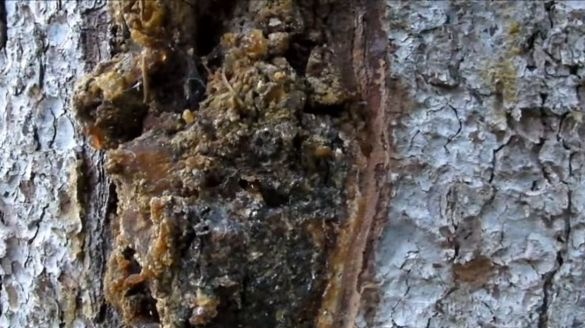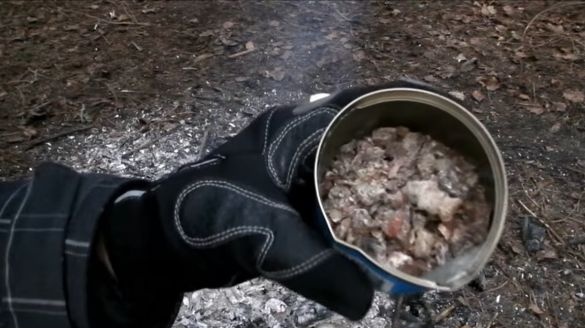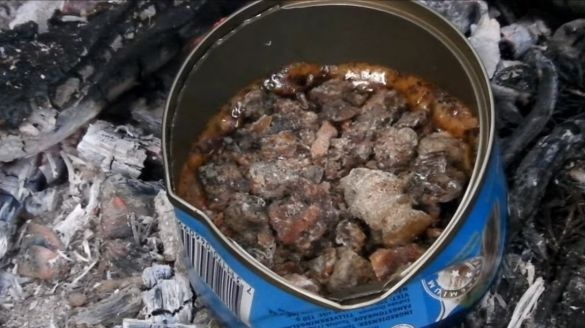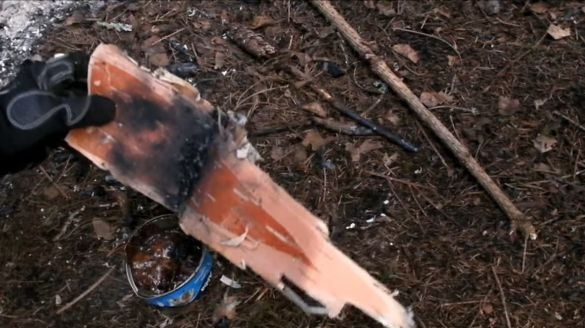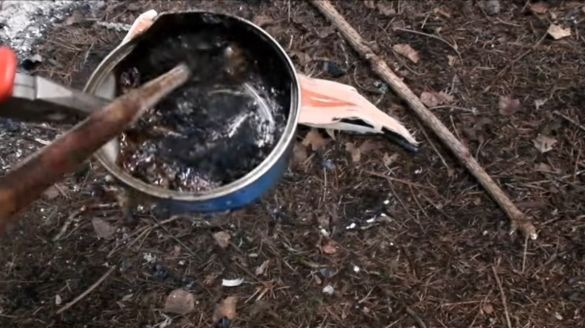In the forest there are quite a lot of coniferous trees that contain resin, often it accumulates on the bark of a tree in the form of drops or small growths. Charcoal can naturally be extracted from an extinct fire. So let's look in detail and in detail, how did the author prepare glue from resin?
Materials
1. resin
2. charcoal
Instruments
1. knife
2. can
3. stone
4. board or flat stone
5. the wand
6. pliers (2 sticks possible)
The process of making glue from resin and charcoal.
As already mentioned above, if you need glue during the trip, you can easily prepare it. The first step is to collect the resin from conifers (pine, spruce, fir, cedar), it mainly accumulates on the tree bark in the form of droplets and small growths. You can pick up a few lumps with a knife without damaging the integrity of the tree bark and put in a jar or bag.
Also, the resin can be used as an antiseptic for healing wounds and scratches, so you can dial with a margin, just in case of a “fire case” by the way, and you can make a fire with it.
The author collects the resin, picking the lumps with a knife and puts it in a jar.Next, the master transfers the collected resin to a can from under canned food, if not, then you will have to make it out of stone (by hollowing out a groove in it). But the author had it available. It is advisable to pre-crush the resin, you can use a small stick or stone.Then the resin should be melted at the stake. ATTENTION! it is best to put the jar on coals, because from an open flame the resin may break out and you will have to put out the fire! And so the resin melted on the coals and the author removes it from the source using pliers, but you can use 2 sticks.Previously, our tourist prepared coal and ground it with a stone on a piece of bark into powder. The resulting powder is poured into a still boiling resin.It pours out all without a trace.It is mixed with a wooden stick and brought to a homogeneous mass.Further, the author tries to glue two sticks with hot glue by pouring water on top of the crosshair.That's what happened when the glue froze.As already mentioned, this glue can be used for various purposes, both for the manufacture of weapons and the repair of dishes or clothes. As you can see the recipe is simple, for sure it will come in handy the next time you go camping.
There is also another more effective recipe for making glue from the resin, everything is the same, only the "secret ingredient" is added I think you will be interested)
And so, for better bonding and reinforcing the adhesive, add organic materials such as frayed dry grass or moss. There is also the simplest way to extract these very organic fibers - this is the excrement of herbivores (elk, deer, roe deer) in the forest they can be found without much difficulty, you just need to look carefully under your feet) As already mentioned, the manufacturing technology is almost the same. First, the resin is collected from conifers.

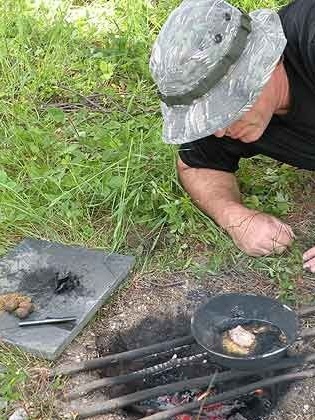
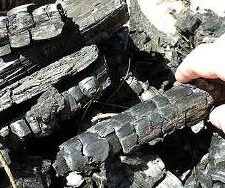
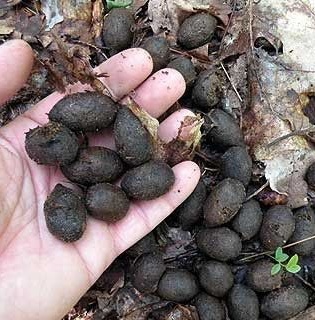
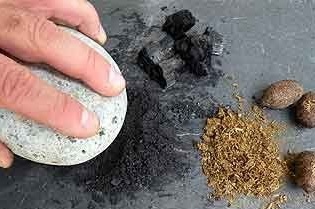


For long-term storage of glue and its transportation, it should be rolled up into a ball or sausage after cooling, using a bag or birch bark, it is not recommended with bare hands because of the increased stickiness of the resin.
Here you also learned one wonderful recipe for making glue from resin in a camping trip. Surely it will come in handy on your next trip. This concludes the article. Thanks for attention! Visit the site often, do not miss the latest in the world of homemade goods!
This article is for informational purposes only!

